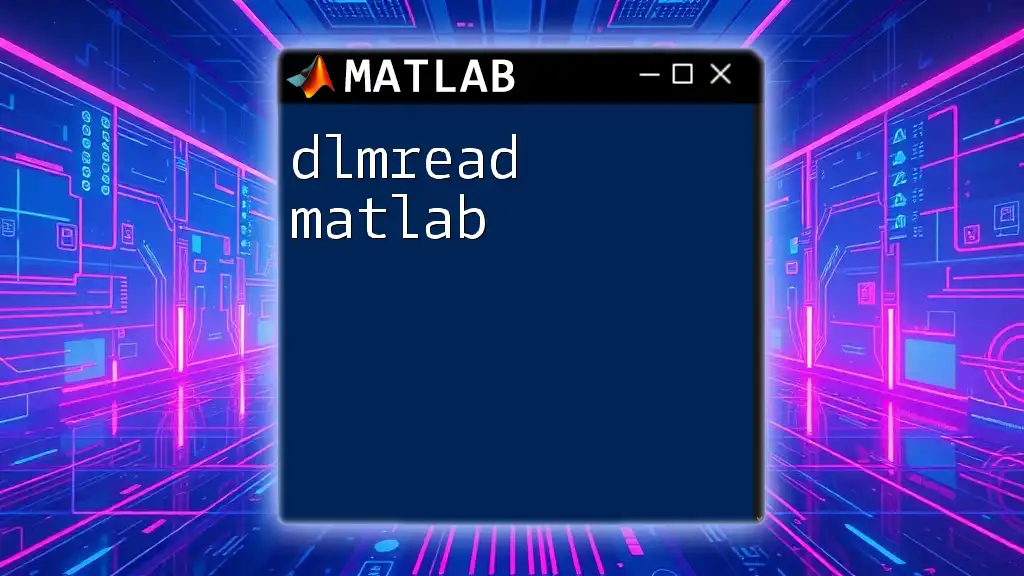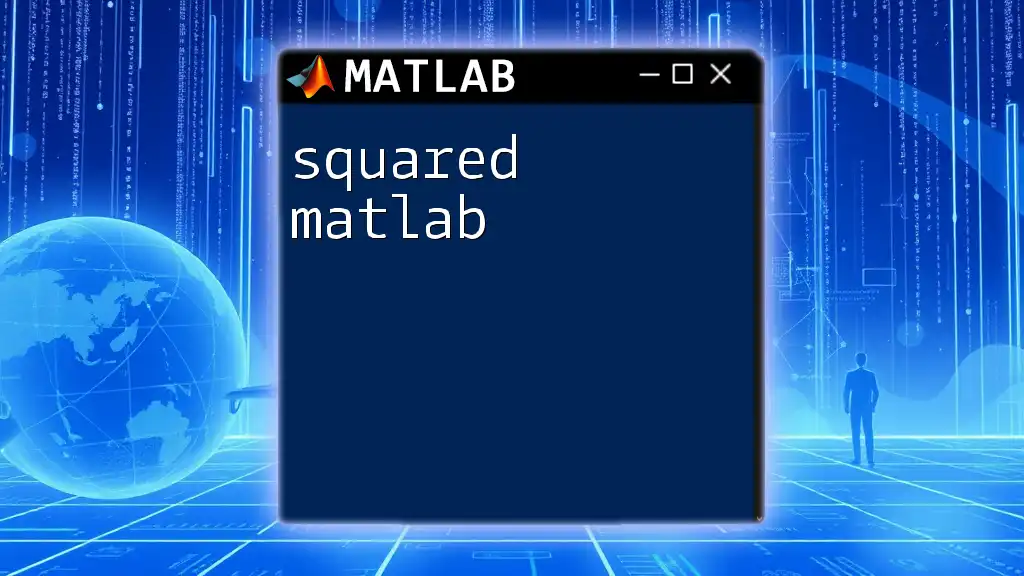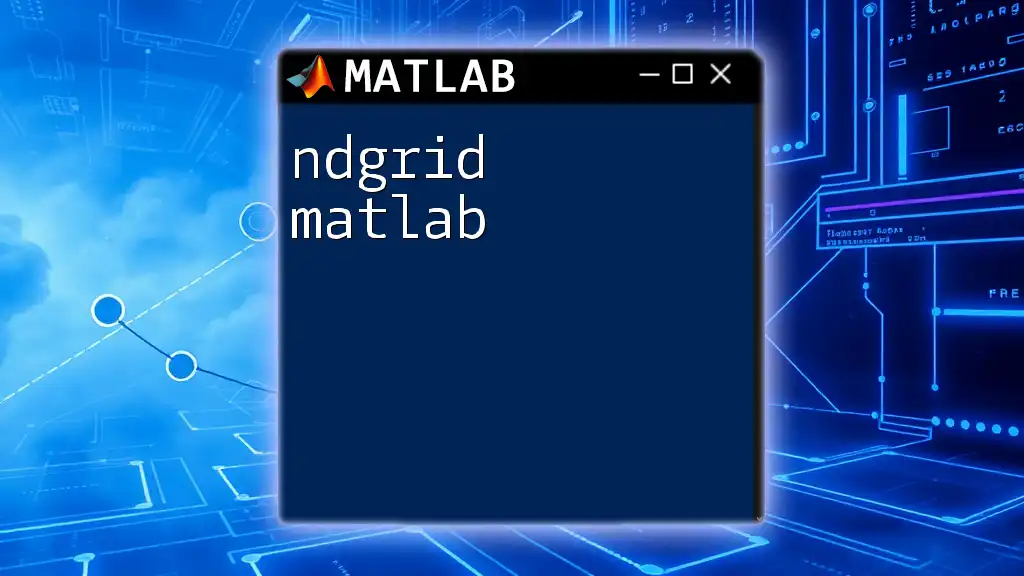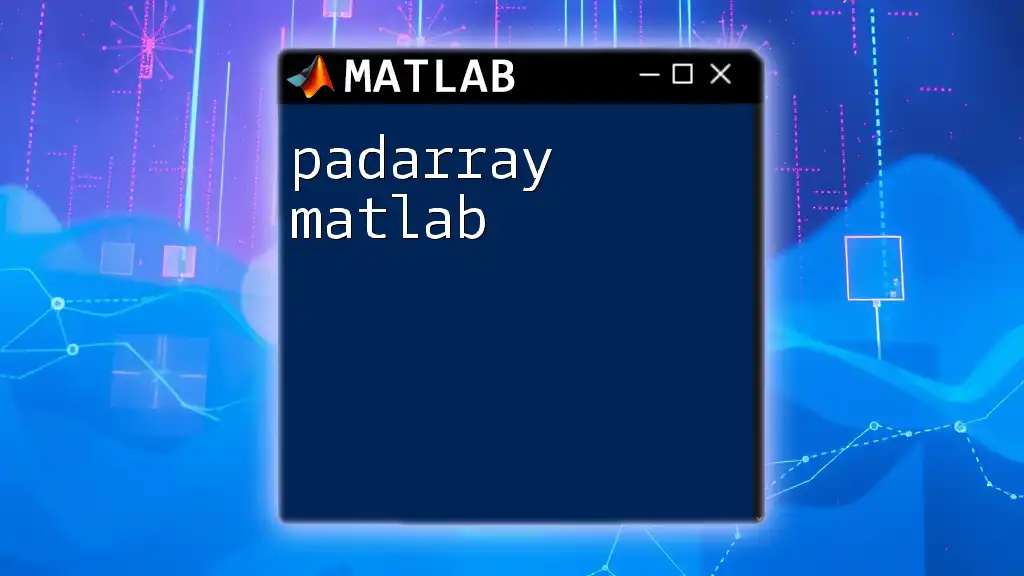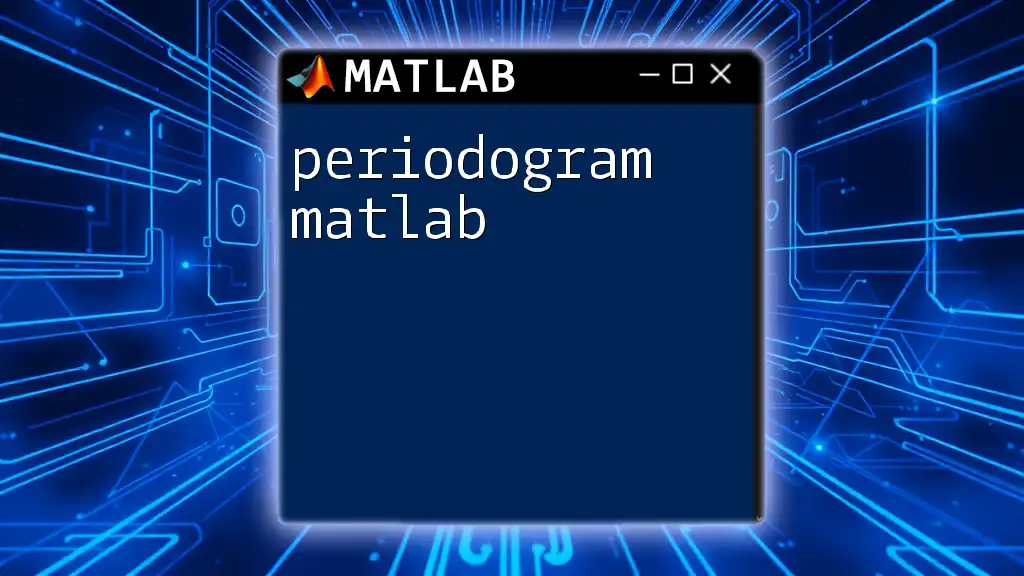The `dlmread` function in MATLAB is used to read text files containing numerical data, enabling users to easily import data into the MATLAB workspace.
data = dlmread('datafile.txt');
What is `dlmread`?
`dlmread` is a MATLAB function that allows users to read data from delimited text files quickly and efficiently. These files contain data that are separated by a specific character, known as a delimiter, such as a comma, tab, or space. This function streamlines the process of importing data into MATLAB for analysis and manipulation.
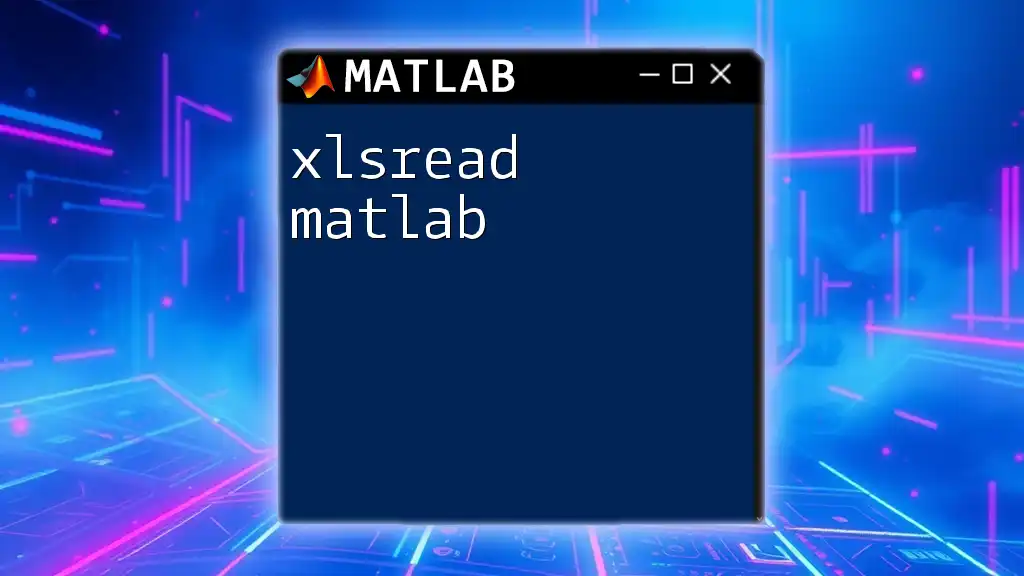
Why Use `dlmread`?
Using `dlmread` offers several advantages over other file import functions:
- Simplicity: It's straightforward to implement and easy to understand, making it ideal for beginners.
- Flexibility: You can specify different delimiters, allowing for compatibility with a variety of file formats.
- Efficiency: Designed for speed, it can handle large datasets, which is essential for data scientists and engineers.
Common scenarios for utilizing `dlmread` include reading CSV files from databases, importing experimental data saved in a tab-delimited format, or processing outputs from other MATLAB functions that export data in text files.

Understanding Delimited Files
What Are Delimited Files?
Delimited files are text files that organize data in a tabular format where each line corresponds to a row in a table, and the values within each line are separated using a predefined character (the delimiter). Common types of delimiters include:
- Comma (`,`): Widely used in CSV (Comma-Separated Values) files.
- Tab (`\t`): Used in TSV (Tab-Separated Values) files.
- Space (` `): Sometimes used for less structured datasets.
Examples of Delimited Files
For instance, a simple CSV file might look like this:
Name,Age,Occupation
Alice,30,Engineer
Bob,25,Data Analyst
This file contains three columns: Name, Age, and Occupation, with each value separated by a comma. Understanding this structure is key when importing data into MATLAB.
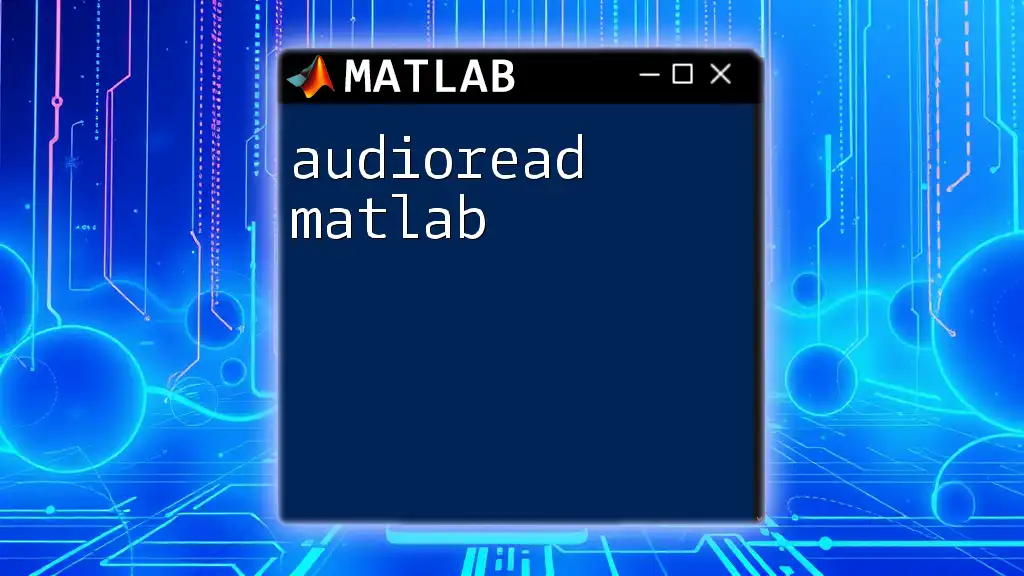
Syntax of `dlmread`
Basic Syntax
The basic syntax for using `dlmread` is:
data = dlmread(filename)
In this case, `filename` is a string that specifies the name of the file to read, including its file extension (e.g., `data.csv`). The output, `data`, will be a numeric array containing the values from the file.
Advanced Syntax
You can enhance the functionality of `dlmread` using its advanced syntax:
data = dlmread(filename, delimiter, R1, C1)
- `delimiter`: This optional parameter specifies the actual character used to separate the values. By default, this is a comma.
- `R1` and `C1`: These optional parameters allow you to define the starting row and column from which to begin reading the data. This is useful for skipping headers or selecting specific parts of a dataset.
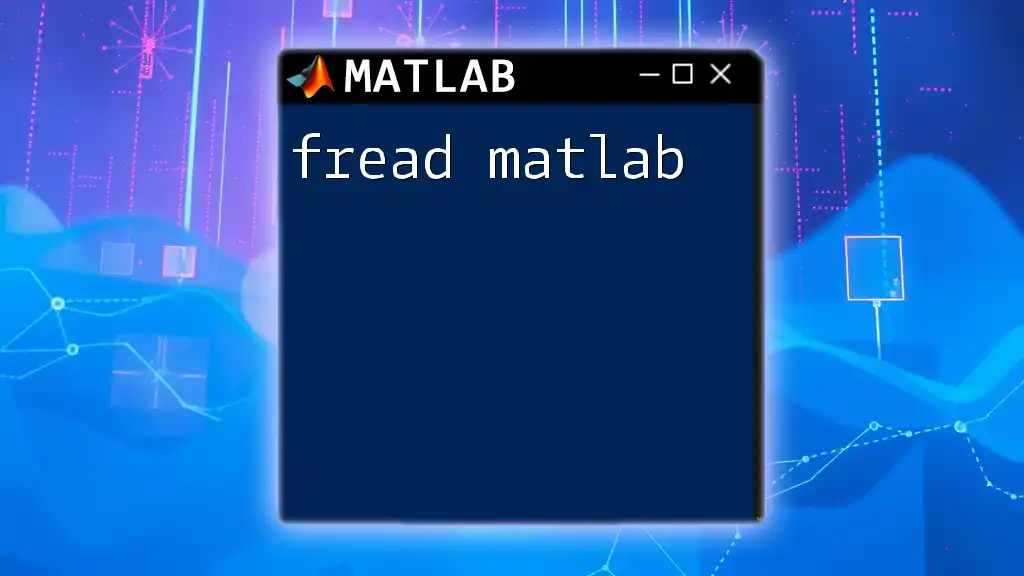
Step-by-Step Instructions to Use `dlmread`
Loading a Simple CSV File
To load a simple CSV file, you might start with the following command:
data = dlmread('data.csv');
disp(data);
When you run this command, MATLAB will read all rows and columns of `data.csv` and display the corresponding numeric array.
Specifying a Delimiter
If your data is in a tab-separated values (TSV) format, you need to specify the tab character as the delimiter:
data = dlmread('data.tsv', '\t');
disp(data);
In this case, using `'\t'` tells MATLAB to recognize tabs as the separators between values, allowing for accurate data import.
Reading a Specific Range
To read a specific range of rows and columns from a file, you might use:
data = dlmread('subset_data.csv', ',', 1, 1);
disp(data);
In this example, the command starts reading from the second row (1) and the second column (1), effectively ignoring the headers that may be present in the first row and column of the file.

Error Handling with `dlmread`
Common Errors and How to Fix Them
While using `dlmread`, you may encounter various errors, such as:
- File not found: Double-check the file name and path.
- Inconsistent data types: Ensure that the data in your file is numeric if you are expecting a numeric array.
To troubleshoot these errors, refer to the MATLAB error messages and consult the file directly to verify its content.
Validation of Input Data
Validating your input data is crucial before importing it with `dlmread`. Ensure that:
- The file exists and is accessible.
- The chosen delimiter corresponds to the structure of your file.
- The data is in a format compatible with how you expect to use it in MATLAB.

Best Practices for Using `dlmread`
Efficiently Organizing Your Data Files
To maximize efficiency when working with data, consider organizing your files by:
- Using descriptive file names to specify content and date.
- Keeping files organized in folders by project or type.
Consistency in delimiters across your datasets also aids in simplifying the import process.
Avoiding Pitfalls
Common mistakes when using `dlmread` include:
- Assuming all data is numeric. If there are any text values, consider using `dlmread` in conjunction with other functions like `readcell` or `textscan`.
- Misidentifying the delimiter, which can lead to incorrect or unexpected data import results. Always check the file structure before implementing your imports.

Alternatives to `dlmread`
Comparison with Other Functions
While `dlmread` is effective, MATLAB offers other functions worth considering:
- `readmatrix`: A newer, flexible function that simplifies reading mixed data types.
- `readtable`: Ideal for tabular data containing headers, automatically parses data types for each column.
- `csvread`: It is similar to `dlmread` but specifically designed for CSV files; however, it is less versatile compared to `dlmread`.
When to use these alternatives often depends on your specific data structure and requirements for importing.
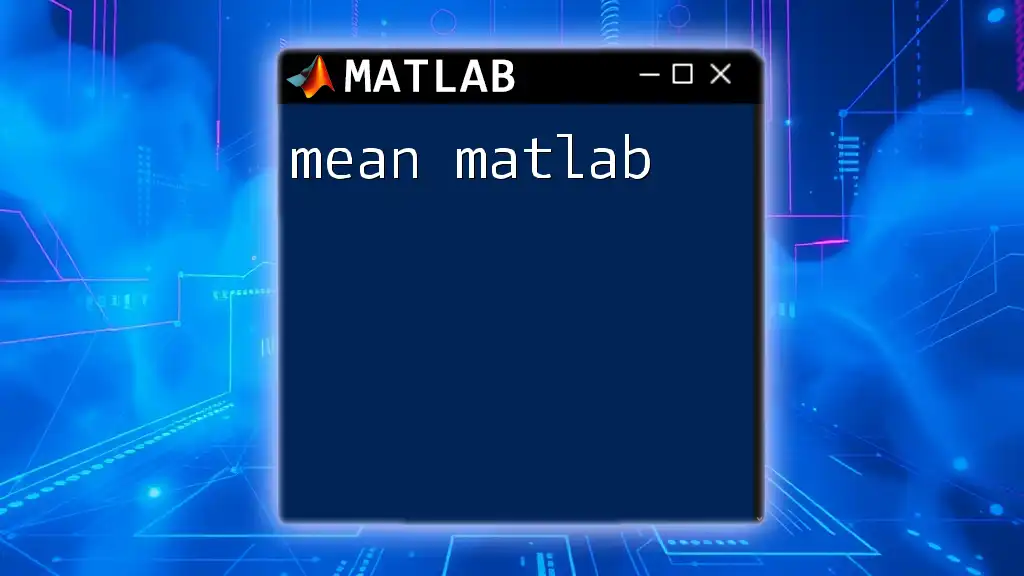
Real-World Applications of `dlmread`
Case Study: Analyzing Experiment Data
Imagine you have experimental measurement data saved in a text file. By employing `dlmread`, you can quickly read your data, manipulate it in MATLAB, and perform statistical analyses to derive meaningful insights.
For example, if you have recorded measurements in `experiment_data.csv`, the process may look like:
data = dlmread('experiment_data.csv', ',');
mean_value = mean(data);
disp(mean_value);
This sequence reads the data and computes the mean, showcasing basic yet essential data analysis steps.
Application in Data Projects
Incorporating `dlmread` into larger MATLAB projects can greatly enhance your data processing capabilities. Whether you are preparing machine learning datasets or generating visualizations from imported data, `dlmread` serves as a reliable tool for getting your data into MATLAB efficiently.

Conclusion
Summary of Key Points
The `dlmread` function in MATLAB is a powerful tool for reading delimited text files. Its simplicity, flexibility, and efficiency make it ideal for a wide range of data import tasks. Understanding its syntax and features can significantly enhance your data handling capabilities within MATLAB.
Further Resources
For more in-depth understanding, consider exploring MATLAB documentation related to `dlmread`, `readmatrix`, and `readtable`. Online forums, such as MATLAB Central, can also provide community support and answers to specific queries.
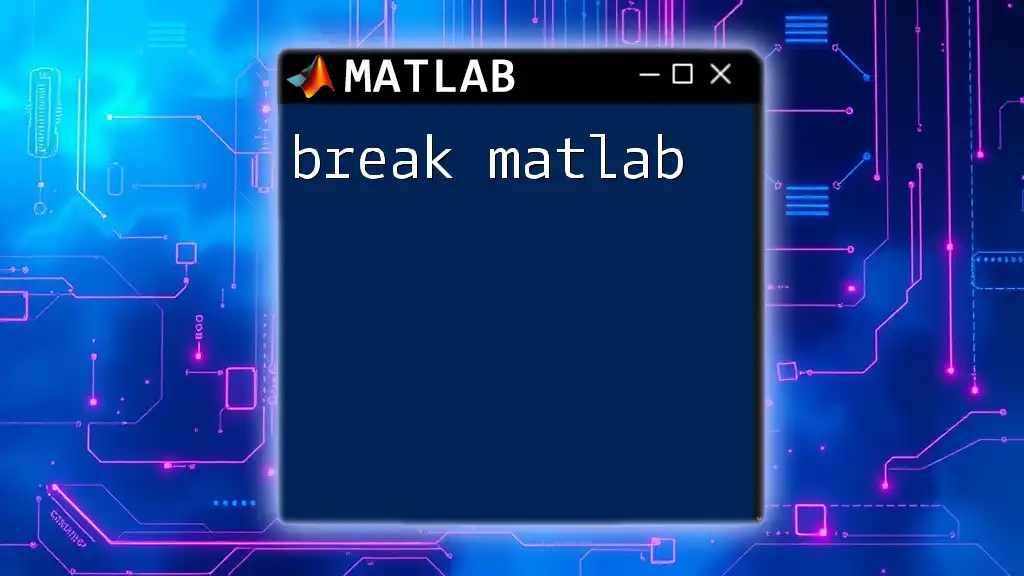
Call to Action
Now is the perfect time to start leveraging `dlmread` for your data import needs. Try implementing it in your next MATLAB project, and consider signing up for our courses to master MATLAB commands for efficient and effective data handling.

